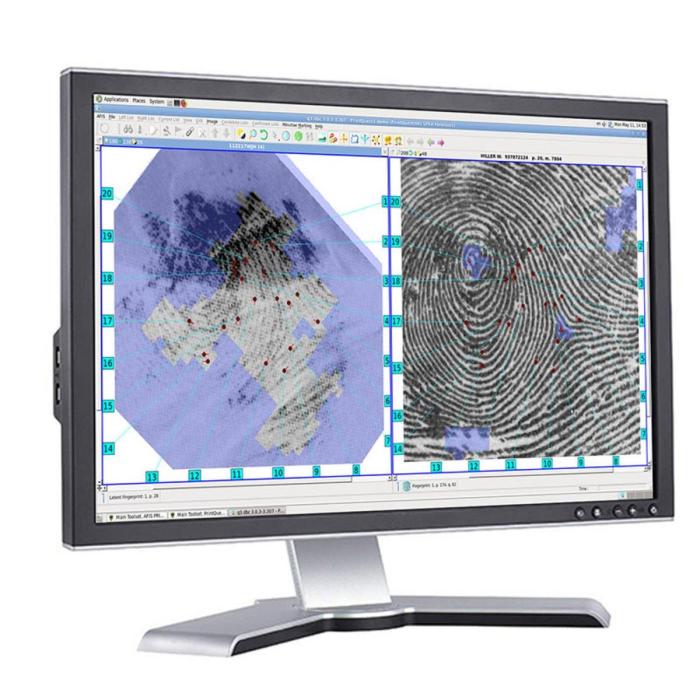Which of the following can be processed using the AFIS? This question delves into the capabilities of the Automated Fingerprint Identification System (AFIS), exploring the specific types of data it can handle. AFIS plays a crucial role in forensic investigations, criminal justice, and various security applications, and understanding its data processing capabilities is essential for effective utilization.
AFIS employs advanced techniques to analyze and compare fingerprint data, enabling the identification and verification of individuals. Its ability to process different data formats and types contributes to its versatility and efficiency in various applications. This article provides a comprehensive overview of the data types compatible with AFIS, examining their characteristics and discussing the advantages and limitations of AFIS data processing.
Methods for Processing Data Using AFIS
Automated Fingerprint Identification Systems (AFIS) utilize various techniques to process fingerprint data for identification purposes. These methods involve extracting and comparing unique features from fingerprint images to establish matches or identify individuals.
Minutia Extraction
Minutia extraction involves identifying and recording specific points of interest within a fingerprint, such as ridge endings and bifurcations. These minutiae points serve as unique identifiers and are used for comparison.
Pattern Analysis
Pattern analysis examines the overall flow and pattern of ridges within a fingerprint. By identifying specific patterns, such as loops, whorls, and arches, AFIS can categorize and group fingerprints for efficient searching.
Image Enhancement
Image enhancement techniques are employed to improve the quality of fingerprint images. This includes removing noise, enhancing contrast, and adjusting brightness levels to make the minutiae more visible for extraction.
Data Types Compatible with AFIS

AFIS can process various types of fingerprint data, including:
Live Scan Data
Live scan data is captured electronically using fingerprint scanners, providing high-quality images with minimal distortion.
Rolled and Plain Impressions
Rolled and plain impressions are traditional methods of capturing fingerprints using ink and paper. These impressions require careful handling to preserve the ridge detail.
Latent Prints
Latent prints are fingerprints left behind at crime scenes or on surfaces. AFIS can process latent prints using specialized techniques to enhance and extract minutiae.
Examples of AFIS Applications
AFIS has numerous applications in law enforcement and security:
Criminal Identification
AFIS is used to identify suspects and match fingerprints to known criminals, assisting in solving crimes and apprehending perpetrators.
Background Checks
AFIS can verify fingerprints for background checks, ensuring the accuracy and integrity of personal information for employment or security purposes.
Border Control
AFIS is employed at border crossings to identify individuals and verify their travel documents, enhancing security and preventing illegal entry.
Limitations of AFIS Data Processing: Which Of The Following Can Be Processed Using The Afis

AFIS data processing has certain limitations:
Fingerprint Quality
The accuracy of AFIS depends on the quality of the fingerprint images. Poor-quality images can result in false matches or non-matches.
Environmental Factors
Environmental factors such as moisture, dirt, or scars can affect the clarity of fingerprints, making them difficult to process.
Database Size
The size of the fingerprint database can impact search efficiency. Large databases require more time and computational resources to process.
Comparison of AFIS with Other Data Processing Systems

AFIS differs from other data processing systems in the following ways:
Specificity
AFIS is specifically designed for fingerprint processing, focusing on minutiae extraction and pattern analysis, making it highly accurate for fingerprint identification.
Image-Based
AFIS processes images of fingerprints rather than text or numeric data, allowing for the analysis of unique visual characteristics.
Efficiency
AFIS is optimized for efficient searching and matching, enabling rapid identification of individuals from large databases.
Future Directions for AFIS Data Processing
AFIS data processing is constantly evolving:
Advanced Algorithms
Machine learning and artificial intelligence algorithms are being integrated into AFIS to improve accuracy and efficiency.
Biometric Fusion
AFIS is being combined with other biometric systems, such as facial recognition, to enhance identification capabilities.
Mobile Applications, Which of the following can be processed using the afis
AFIS technology is being adapted for use on mobile devices, allowing for on-the-spot fingerprint identification.
Question Bank
What types of data can AFIS process?
AFIS primarily processes fingerprint data, but it can also handle other biometric data such as facial images, iris scans, and palm prints.
What are the advantages of using AFIS for data processing?
AFIS offers several advantages, including high accuracy, efficiency, and the ability to handle large volumes of data.
What are the limitations of AFIS data processing?
AFIS may face limitations in processing low-quality data or data with significant distortions.